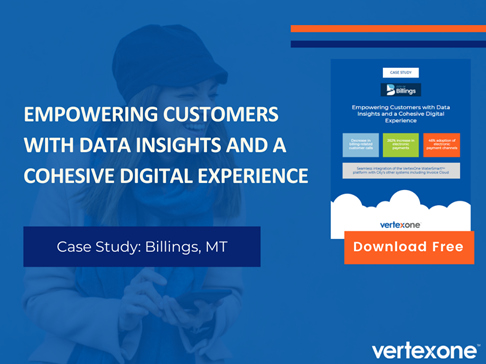Timely and reliable customer payments are the backbone for all utilities. As the world of technology improves around us, utilities need to continue to evolve alongside the customer to ensure that they are optimizing the bill payment experience.
Instead of simply checking a box and offering the bare minimum when it comes to payment options, utilities need to consider the entire customer experience, be able to meet customers where they are, and how they prefer to pay.
For example, consumers are demanding choices for where to access their digital bill, with 58% of consumers saying the ability to view their digital bill in multiple places was important.
Understanding where and how customers choose to view and pay their utility bills is only part of the equation though. Once you communicate the breadth of your payment options and can get customers on-board, the entire experience needs to be well designed – which means they need to be easy to access, use, and navigate. You don’t want to confuse the customer and potentially lose the opportunity to receive their payment.
By having an integrated customer engagement solution that not only allows customers to easily pay their bills but also view consumption, check and resolve leaks, receive targeted messages, and analyze current and past bills, utilities are able to significantly improve collections, customer satisfaction, and operational savings.
How Can Utilities Better Optimize Their Customer Engagement Platform?
Here are a few ways utilities can improve the performance of their payment platform, both to improve customer satisfaction and guarantee more consistently, on-time payments.
1. Improved payment experience and discoverability
Start with improving the payment experience. While many utilities offer multiple payment options, the experience of actually paying your utility bill can be confusing. Oftentimes, each payment option (credit card, debit card, ACH, etc.) is implemented through different vendors with unique interfaces, thus leading to confusion for the end-user. Other times, the enrollment process may require downloading a pdf file, printing the form, and mailing it back to the utility or the user’s financial institution.
Unifying payment options under a common and easy-to-use interface minimizes the steps required to complete a payment, eases discovery, facilitates auto-pay adoption, increases paperless billing enrollment, and improves overall payment reliability.
2. More payment channels
End users like options. Some people prefer 3rd party vendors like PayPal or Apple Pay, others like the ability to pay remotely over their mobile device in a digital portal, some like setting-up a recurring payment from a credit card, some by text, and finally some continue to prefer to pay their utility bill in person.
Making sure that customers have many methods to pay provides the opportunity to meet the needs of each customer and thus improve the likelihood of an on-time payment.
3. Flexible payment schedules
Allowing users to pay when they prefer, not just how, creates additional flexibility and can lead to improved performance. For example, some customers have a difficult time setting aside enough money each month for their utility bill when they are paid on a bi-weekly basis. Young people (from 18 to 34 years old) and those making less than $50,000 were the most likely to miss or partially pay one or more bills.
Offering the ability to schedule payments that align with pay check periods, or even making pre-payment options available, reduces the amount of each payment, making it easier for at risk customers to afford billed amounts.
4. Leveraging predictive analytics to inform proactive outreach
Utilities can do a much better job anticipating users that are less likely to pay their bills and taking proactive steps to address this sub-set of customers. Modern data-analytics technologies can comb through years of payment and consumption history and generate highly accurate predictions of those users that are more or less likely to pay their bills on time. This provides utility managers the opportunity to design targeted campaigns to address these at-risk customers.
5. Micro targeting
Using AMI, predictive analytics and other demographic, census, financial, and consumption data to better segment customers creates the ability to target specific customer groups with offers and programs that will help improve their payment performance. For example, low income residents should be offered money saving efficiency program information and more detail on Customer Assistance Programs (CAPs) for which they might be eligible. Simultaneously, utilities have the capability to lower utility bills through demand management programs and enroll disadvantaged customers in assistance programs to improve water affordability, thus reducing bill delinquencies and non-payment.
Next Steps for Improving the Payment Experience
Not all of these approaches need to be implemented concurrently, and a staged approach can spread the costs over time and departments. It’s also important to identify experienced vendors who provide the meter to cash technologies to help utilities address customers in need.
As with most things, the first step to solving a problem is to determine the underlying causes for the challenge. In this case, an acknowledgement of the reasons for the revenue collection challenges the industry faces creates opportunities for incremental improvement that will help to create greater balance in social equity and a more resilient water utility for the future.
Check out the free case study below to learn how Billings, MT was able to integrate their InvoiceCloud payment solution with VertexOne’s WaterSmart customer engagement solution to improve operational efficiency, increase adoption of digital engagement and payment channels, and reduce the number of payment related issues and customer complaints.

